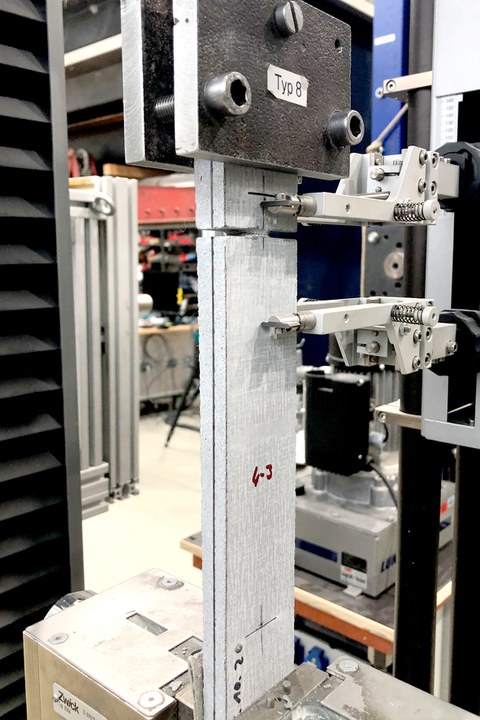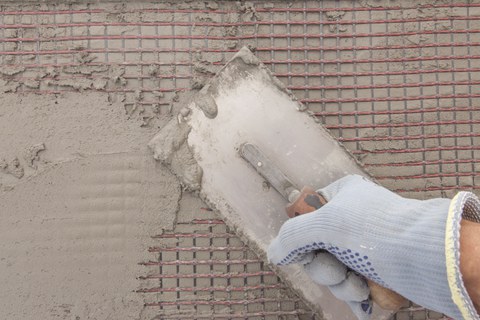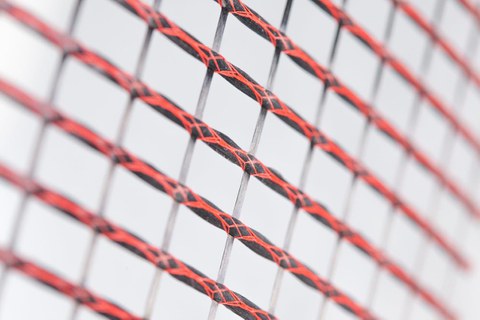C3-L9: Regulations
Project data
|
Titel | Title |
Report in the annual report 2021
Design for everyday life
In the course of the research project “C3 – Carbon Concrete Composites”, extensive foundations for the application of the carbon concrete composite material were developed as well as in-depth considerations were made. The findings of these research activities have been presented in the form of a large number of research reports, publications in specialist journals or even conference papers, but there is no regulation accessible to the general public. This creates a market entry barrier for the material, which impresses with its very good mechanical properties. Therefore, a major goal is to provide a set of regulations for carbon concrete that is as uncomplicated as possible for practical use, into which the results from the C3 project are to be incorporated.
For this purpose, the DAfStb is currently preparing a guideline for new construction based on carbon concrete components derived from Eurocode 2, which is to be published in the course of the coming year. One of the discussion bases for this guideline are the draft guidelines prepared in C3, the so-called working papers. The working papers were prepared in the previous project C3-V1.2 and have been supplemented in its successor project C3-L9 to integrate the continuously acquired research findings.
For C3-L9, however, the scope was significantly reduced compared to C3-V1.2, so that no experiments are carried out in the project anymore. Instead, the focus is on the pure collection of results, discussion and processing in the working papers. The working group, which now consists of only four project partners, has also been reduced.
Because the working papers only represent a draft or a basis for discussion for the guideline, the areas of application presented are partly more detailed and extensive, for example, the fatigue strength and prestressing of carbon concrete are already dealt with. However, the guideline will also be continuously updated after the first publication, for which the results from C3-L9 can be used. In addition, the working papers deal with strengthening with carbon concrete, which will not be part of the guideline. This topic will be integrated into strengthening-specific regulations in the future.
Report in the annual report 2020
Closing gaps in the regulatory framework

Single-sided pull-out test
As a successor project to the project C3-V1.2 “Standardization and Approval“ the C3-L9 project “Gap Closure“ was launched to continue the draft guidelines that begun during the C3-V1.2 project. The project aims to be able to make practical recommendations for the use of carbon concrete. Based on the applicable European standards for reinforced concrete construction, these draft guidelines are developed to compile the research results of all partners involved in the C³ project. The new findings are presented and discussed at regular project meetings and, if meaningful results become available, the relevant sections in the draft guidelines are then revised.
A total of four different draft guidelines are created in the areas of dimensioning, reinforcement, test methods and execution. Compared to the approach within the project C3-V1.2, the test method part is a separate draft guideline and no longer an appendix to the dimensioning part. Some procedures and methods are already well advanced in their elaboration, so there is already an applicable verification process for bending both in new buildings and in the reinforcement of existing structures. For other stress states, such as shear force and torsion, the existing models have to be revised, as these could no longer be validated for the newly developed carbon reinforcement elements.
With the completion of C3-V1.2, further areas were left completely open in the draft guidelines, such as fatigue, endurance behaviour or the ultimate state of usability. In some cases, initial approaches to these topics have already been incorporated within the framework of C3-L9, such as the prestressing of carbon concrete. Also, test methods that have already been developed and established in research have been included in the draft guidelines, examples of which are the overlapping test to determine the overlap lengths for joints between fabrics or the bond test for carbon rebars based on the RILEM test. Further modules are expected when the ongoing C3 projects are completed. In the next steps, the fatigue knowledge from the project C3-V2.1 is to be incorporated and the procedure for reinforced concrete structures is to be revised based on the results from the C3-V2.7 project.
Report in the annual report 2019
Regular use of carbon reinforced concrete

Installation of carbon reinforcement
The aim of the C3-L9 project is to prepare process paths and verification concepts for guidelines, standards and approvals in the area of new construction and reinforcement with carbon concrete in order to establish the material in practice. The project serves as a gap closure to the project C3-V1.2, which has already dealt with the proposal of regulations for carbon reinforced concrete in detail but could not yet conclusively treat all relevant results. Some topics, such as the bending design, are already well advanced, but others are not. For this reason, the focus of the follow-up project L9 is mainly on the limit state of serviceability, fatigue, endurance, shear force, punching shear, torsion, the theory of second-order, prestressing and reinforcement and construction rules. The IMB of the TU Dresden is mainly responsible for the strengthening of existing structures.

Carbon textile
The project started in May 2019 and its first aim was to analyse the state of knowledge. For this purpose, two meetings among the participating project partners have already taken place, in which the working papers produced as a result of V1.2 were analysed, taking into consideration the relevant open questions. Afterwards, it was discussed which projects can contribute to a solution to the problems and in whose competence the evaluation of these falls. In addition to the ongoing projects of the four project partners, these also include projects of former project partners from C3-V1.2, who are no longer directly involved in C3-L9, and whose project are either completed or ongoing.
The next meeting will take place at the end of January 2020. Until then, general and project-specific questionnaires will be prepared to address the open points. Interviews with the project team members will follow-up. There are no experiments planned for C3-L9, with priority given to the evaluation of existing data from current and completed projects, as well as providing information for further investigations of ongoing projects in order to cover previously unaddressed issues.
